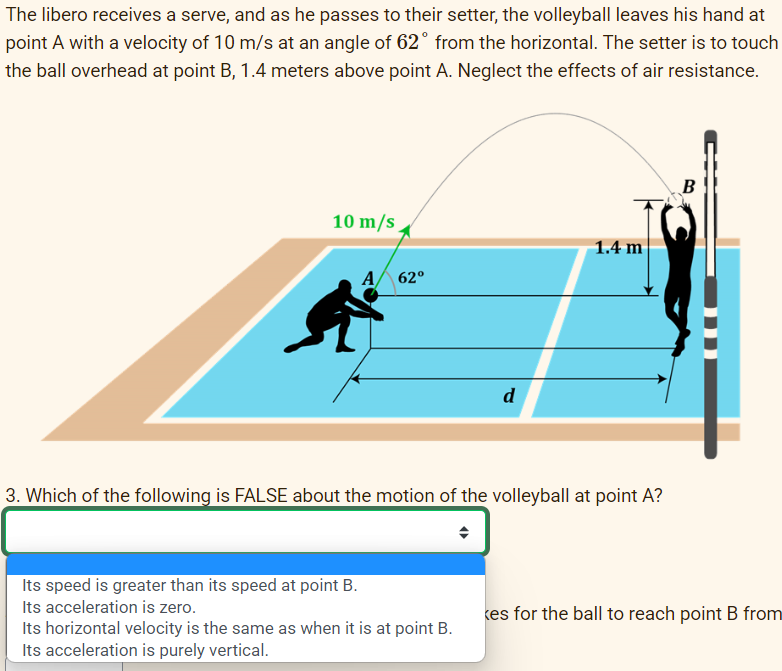The libero receives a serve, and as he passes to their setter, the volleyball leaves his hand at point A with a velocity of 10 m/s at an angle of 62° from the horizontal. The setter is to touch the ball overhead at point B, 1.4 meters above point A. Neglect the effects of air resistance. 10 m/s A 62° d Its speed is greater than its speed at point B. Its acceleration is zero. Its horizontal velocity is the same as when it is at point B. Its acceleration is purely vertical. 1.4 m 3. Which of the following is FALSE about the motion of the volleyball at point A? B kes for the ball to reach point B from
The libero receives a serve, and as he passes to their setter, the volleyball leaves his hand at point A with a velocity of 10 m/s at an angle of 62° from the horizontal. The setter is to touch the ball overhead at point B, 1.4 meters above point A. Neglect the effects of air resistance. 10 m/s A 62° d Its speed is greater than its speed at point B. Its acceleration is zero. Its horizontal velocity is the same as when it is at point B. Its acceleration is purely vertical. 1.4 m 3. Which of the following is FALSE about the motion of the volleyball at point A? B kes for the ball to reach point B from
Related questions
Question
answer now plsss

Transcribed Image Text:The libero receives a serve, and as he passes to their setter, the volleyball leaves his hand at
point A with a velocity of 10 m/s at an angle of 62° from the horizontal. The setter is to touch
the ball overhead at point B, 1.4 meters above point A. Neglect the effects of air resistance.
10 m/s
62⁰
Its speed is greater than its speed at point B.
Its acceleration is zero.
d
3. Which of the following is FALSE about the motion of the volleyball at point A?
Its horizontal velocity is the same as when it is at point B.
Its acceleration is purely vertical.
1.4 m
B
kes for the ball to reach point B from
Expert Solution
This question has been solved!
Explore an expertly crafted, step-by-step solution for a thorough understanding of key concepts.
Step by step
Solved in 2 steps
